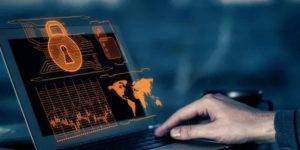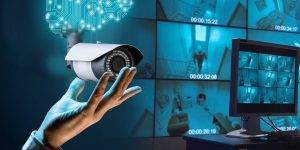What is Security Surveillance

In the contemporary digital sphere, security surveillance is a pivotal tool for organizations aiming to mitigate risks associated with insider threats. Insider threats refer to security risks posed by individuals within an organization, such as employees, who have access to sensitive information. By integrating efficient security surveillance, companies can prevent the misuse of access and protect organizational assets and interests. This blog post will share How Security Surveillance Can Prevent Inside Threats.
Types of Security Surveillance
Understanding the diverse types of security surveillance is crucial for comprehending how they can effectively thwart insider threats. Here’s a more in-depth look into the various tools available and their functionalities.
CCTV Cameras
CCTV Cameras are foundational in the realm of security surveillance, serving as the eyes of an organization. They are strategically placed to monitor and record physical activities within the organizational premises.
- Real-time Monitoring: Offers live feed, allowing immediate response to suspicious activities.
- Recorded Footage: Provides a record of all activities, aiding in investigations if any illicit incident occurs.
- Deterrence: Acts as a deterrent to potential internal and external threats.
- Evidence: Serves as evidential support in the case of security breaches or legal disputes.
Computer Monitoring Software
Computer Monitoring Software is paramount for keeping tabs on employees’ computer activities. It grants insights into user behavior and interactions with digital resources.
- User Activity Logs: Records all user activities, including websites visited, applications used, and files accessed.
- Alerts and Notifications: Sends signals for any unauthorized or suspicious activities.
- Preventing Data Breaches: Helps detect and prevent unauthorized access or leakage of sensitive information.
- Productivity Assessment: Aids in assessing employee productivity and ensuring adherence to organizational policies.
Access Control Systems
Access Control Systems are pivotal in regulating who can access what within the organization. They are gatekeepers, ensuring only authorized individuals can access certain areas or information.
- Authentication and Authorization: Validates user credentials and grants access based on predefined permissions.
- Entry Logs: Maintains records of all access and attempts, aiding in tracking and investigations.
- Securing Sensitive Areas: Safeguards sensitive areas within the organization from unauthorized access.
- Compliance: Helps in compliance with regulatory standards by restricting access to confidential information.
Recognizing Suspicious Activities
Security surveillance aids in recognizing suspicious activities that may signify potential internal threats. Organizations can use behavioral analysis to discern irregular patterns or activities, enabling them to identify and respond promptly to malicious intent or policy violations.
Balancing Security and Privacy
Achieving an equilibrium between maintaining security and respecting privacy is a pivotal concern for organizations implementing surveillance. This balance is crucial in fostering an environment of trust and transparency between the organization and its employees, avoiding the creation of a ‘Big Brother’ atmosphere, which can be detrimental to morale and productivity.
Potential Risks
- Invasion of Privacy: Excessive monitoring can violate individual privacy rights, potentially leading to legal repercussions.
- Decreased Morale: Over-surveillance can create a hostile working environment, possibly reducing employee satisfaction and productivity.
- Legal Consequences: Non-compliance with privacy laws can result in severe legal penalties and tarnish the organization’s reputation.
Ethical Use of Security Surveillance
Understanding the diverse types of security surveillance is crucial for comprehending how they can effectively thwart insider threats. Here’s a more in-depth look into the various tools available and their functionalities.
CCTV Cameras

CCTV Cameras are foundational in the realm of security surveillance, serving as the eyes of an organization. They are strategically placed to monitor and record physical activities within the organizational premises.
- Real-time Monitoring: Offers live feed, allowing immediate response to suspicious activities.
- Recorded Footage: Provides a record of all activities, aiding in investigations if any illicit incident occurs.
- Deterrence: Acts as a deterrent to potential internal and external threats.
- Evidence: Serves as evidential support in the case of security breaches or legal disputes.
Computer Monitoring Software
Computer Monitoring Software is paramount for keeping tabs on employees’ computer activities. It grants insights into user behavior and interactions with digital resources.
- User Activity Logs: Records all user activities, including websites visited, applications used, and files accessed.
- Alerts and Notifications: Sends signals for any unauthorized or suspicious activities.
- Preventing Data Breaches: Helps detect and prevent unauthorized access or leakage of sensitive information.
- Productivity Assessment: Aids in assessing employee productivity and ensuring adherence to organizational policies.
Access Control Systems
Access Control Systems are pivotal in regulating who can access what within the organization. They are gatekeepers, ensuring only authorized individuals can access certain areas or information.
- Authentication and Authorization: Validates user credentials and grants access based on predefined permissions.
- Entry Logs: Maintains records of all access and attempts, aiding in tracking and investigations.
- Securing Sensitive Areas: Safeguards sensitive areas within the organization from unauthorized access.
- Compliance: Helps in compliance with regulatory standards by restricting access to confidential information.
Recognizing Suspicious Activities
Security surveillance aids in recognizing suspicious activities that may signify potential internal threats. Organizations can use behavioral analysis to discern irregular patterns or activities, enabling them to identify and respond promptly to malicious intent or policy violations.
Balancing Security and Privacy
Achieving an equilibrium between maintaining security and respecting privacy is a pivotal concern for organizations implementing surveillance. This balance is crucial in fostering an environment of trust and transparency between the organization and its employees, avoiding the creation of a ‘Big Brother’ atmosphere, which can be detrimental to morale and productivity.
Potential Risks
- Invasion of Privacy: Excessive monitoring can violate individual privacy rights, potentially leading to legal repercussions.
- Decreased Morale: Over-surveillance can create a hostile working environment, possibly reducing employee satisfaction and productivity.
- Legal Consequences: Non-compliance with privacy laws can result in severe legal penalties and tarnish the organization’s reputation.
Ethical Use of Surveillance
Organizations need to be conscientious about the ethical implications of employing surveillance tools. These tools should be guided by a clear and comprehensive policy, ensuring that monitoring is conducted ethically and legally.
Guiding Principles
Organizations should be open about the extent and purpose of surveillance, ensuring that employees are aware of being monitored. Organizations should seek consent from individuals before subjecting them to surveillance. The level of surveillance should be proportionate to the risk, avoiding unnecessary intrusion into individuals’ privacy.
Ensuring Ethical Conduct
Organizations must adopt a thorough and thoughtful approach to implementing surveillance, addressing security needs and ethical considerations.
- Regular Reviews: Organizations should periodically review their surveillance policies, ensuring alignment with legal and ethical standards.
- Employee Involvement: Involving employees in discussions about surveillance policies can help address concerns and foster a sense of ownership and understanding.
- Legal Counsel: Seeking advice from legal counsel can aid in ensuring that surveillance policies comply with existing laws and regulations.
How to Implement Surveillance
Selecting Security Surveillance Tools
When implementing security surveillance, selecting tools with essential features like real-time monitoring, alerts, and secure storage is vital. The deployment strategy should also be considered to ensure the effective monitoring of activities and asset safeguarding.
Integration with Other Security Measures
Integrating surveillance with other security measures, such as firewalls and antivirus software, fortifies an organization’s overall security framework, offering multi-layered protection against potential internal threats.
Evaluating Surveillance Efficiency
Organizations must rigorously monitor and report to appraise the efficiency of the surveillance system accurately. Improvement and optimization are essential to ensure the surveillance systems remain current and adaptable to the evolving threat landscapes.
The Necessity of Hiring a Private Investigation Team
In conjunction with employing security surveillance, acquiring a private investigation team can significantly bolster an organization’s defense against insider threats. A private investigation team provides an extra layer of scrutiny. It possesses the expertise to delve deeper into suspicious activities, unveiling potential hazards that standard surveillance methods might overlook.
This team can conduct comprehensive background checks and forensic investigations, providing a more nuanced understanding of anomalies or security breaches. Their skills in investigative research, coupled with state-of-the-art surveillance technology, can uncover intricate details related to any internal malicious activities or policy violations. This detailed insight is invaluable in identifying the root causes and implementing preventive measures to thwart future threats.
Conclusion
Security surveillance is instrumental in preventing insider threats by detecting and deterring malicious or suspicious activities within an organization. It ensures a secure and reliable working environment, preserving the integrity of organizational assets. However, organizations must implement security surveillance ethically, balancing enhanced security with the privacy rights of individuals and adhering to legal and regulatory standards.
Moreover, our company, Triumph Australia, is a beacon of support. We specialize in providing comprehensive security solutions, ensuring organizations are well-equipped to counter insider threats effectively. Our team of experts leverages cutting-edge technology and extensive experience to deliver customized solutions tailored to each organization’s unique needs. By collaborating with Triumph Australia, organizations can fortify their security framework and cultivate a robust and secure operational ecosystem, fostering trust and reliability amongst their workforce.

